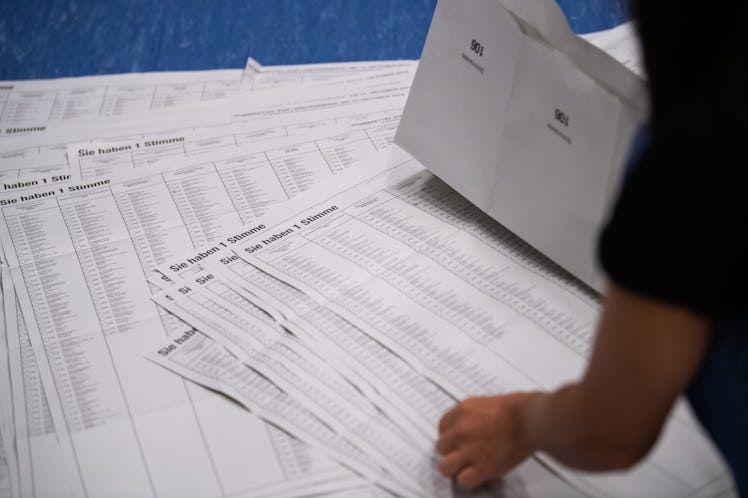
Here's How To Find Out What Measures Are On Your Midterm Ballot, So You're Fully Prepared
As the country is just over two weeks away from Election Tuesday, voters across the country are checking their registration and planning their votes. While candidate races may get all the media hype and attention, ballot measures are also extremely important. You might know who you plan to vote for, but do you know what ballot measures are on your 2018 midterms ballot? If not, here's how to find out.
Compared to the much more exciting candidate races, ballot measures are the voting equivalent of getting a shot at the doctor's office: Most people dread it, it's generally unpleasant, and all you'll have to show for it is a sticker. For anyone who's had the extreme pleasure of reading ballot measure literature, they can tell you it's no cakewalk. Measures themselves are infamous for being dense, jargon-laden ramblings on dry topics like the fiscal feasibility or economic impact of a particular policy. The flip side is that they can have a huge impact on a state or county's individual future, affecting things like the local budget, what the state's marijuana laws are, even what future voting laws are. In the 2018 midterm election alone, there are ballot measures around the country asking voters to weigh in on abortion, transgender rights, and legal marijuana.
As tempting as it may be to skim the dense measures and just vote your gut, that can massively backfire, especially as different political groups may put out statements trying to woo voters one way or another, and they've all got agendas and ways to spin a particular piece of legislation to favor that. But take that partisan bickering as a clue that this is not something to ignore: It's because these measures are so important that groups work hard to get these measures to pass or fail, and that alone means it's worth paying attention to them.
But while actually doing the research on your ballot issues may sound daunting, it doesn't have to be. There's no reason to limit yourself to the dense literature on your ballot. Take a look at these easy online resources if you're on the hunt for some time-saving ballot assistance.
The first step is to find out what measures or initiatives are even on your ballot, which you can do by searching Ballotpedia's sample ballot lookup, which will show you everything that will be on your ballot and asking for your vote in November.
Ballotpedia overall offers an impressive amount of info as voters prepare to head to the polls: You can find polling locations and hours, rundowns of the candidates, ballot issues, and more. Even if you're an expert on the issues or know who you're voting for, it organizes all the must-know details in one easy place, and for that alone, it's a good one-stop shop for everyone.
Note that this only includes comprehensive election info for the most populous 100 cities, but also provides a wealth of information on measures state- and nationwide.
There's also the official Secretaries of State websites, where you'll likely be able to find info on voting right from the horse's mouth. States generally have separate websites devoted just to their election processes, so using the national directory linked above, click through to find the website for your state. Individual counties also tend to compile voter info online as well.
You can also check out resources like Vote411 voter guides, which will give you another way to see your ballot in advance, complete the opportunity to compare candidates.
While the League of Women Voters has individual ballot guides by state (like California, Washington, and New York), the organization's real MVP is the Vote411 website, which provides location-specific personalized ballot guides. It's all nonpartisan, so you can rest assured you're getting reliable info, and provides answers to pretty much any election-related questions you could possibly have.
If you're so inclined to vote along ideological lines, you might find sites like the Progressive Voter Guide or Christian Voter Guides helpful, but keep in mind, again, that these groups are providing their own prescribed take on what yeas and nays are right, and may not reflect any particular voter's values or preferences. If nothing else, guides like this may help provide different perspectives on a specific measure if you're looking for more takes on a controversial measure. (Use at your own risk.)
Whatever method you use to research your ballot measures, the point is that you do. Happy voting!